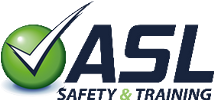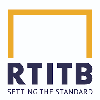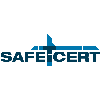Driver CPC Module 1 Training
The purpose of the Training is to confirm and expand the existing knowledge and skills of each driver, ensuring professional drivers continue to be safe, courteous and fuel efficient drivers who drive from a road sharing perspective.
CPC module 1 is for Control of the Vehicle and Eco Driving Techniques.
Upon successful completion of the day long course candidates will be awarded a Drivers Certificate of Professional Competence.
Driver CPC is a Certificate in Professional Competence for professional bus and truck drivers. Its purpose is to set and maintain high standards of safety and driving among drivers of trucks and buses across Europe.
Who Driver CPC affects?
Driver CPC affects all bus and truck drivers who hold a relevant full licence from the 10th of September 2008 and the 10th of September 2009 respectively. If you drive a bus professionally (i.e drive and get paid for it) you will need to undertake Driver CPC training. This applies to all professional bus drivers whether they are full time or part time and whether they drive on public or private roads.
Drivers must complete 1 module per year in order to drive professionally.
(it is not necessary to complete more then 1 module per year)
PROGRAMME OBJECTIVES
Section 1:
MODULE OBJECTIVES
Objective heading
To know the characteristics of the transmission system in order to make the best possible use of it.
Directive Text
Curves relating to torque, power, and specific consumption of an engine, area of optimum use of revolution counter, gearbox-ratio cover diagrams.
Training Aim
At the end of this training the trainee driver will understand:
- Curves relating to torque;
- Performance curves;
- Specific consumption curves of engines;
- The area of optimal use of revolution counter (according to the data of vehicle manufacturers);
- Optimal speed engine range when shifting gears/gearbox-ratio cover; diagrams (according to the data of vehicle manufacturers
Section 2:
MODULE OBJECTIVES
To know the technical characteristics and operation of the safety controls in order to control the vehicle, minimise wear and tear and prevent dysfunction.
Directive Text
Specific features of hydraulic vacuum servo brake circuit, limits of the use of brakes and retarder, combined use of brakes and retarder, making better use of speed and gear ratio, making use of vehicle inertia, using ways of slowing down and braking on downhill stretches, action in the event of failure.
Training Aim
At the end of this training the trainee driver will understand:
- Specific features of hydraulic vacuum servo brake circuit;
- Limits to the use of brakes and brake retarder;
- The combined use of brakes and retarder;
- Making better use of speed and gear ratio when slowing;
- Use of vehicle inertia when braking;
- Ways of slowing down and braking on downhill stretches;
- Action in the event of failure.
Section 3:
MODULE OBJECTIVES
Objective heading
Ability to optimise fuel consumption.
Directive text
Optimisation of fuel consumption by applying know-how as regards, the transmission system and the safety controls (as per Directive 2003/59/EU).
Training Aim
At the end of this training the trainee driver:
- Will know the effects of the local conditions on the fuel consumption;
- Can adjust driving behavior to the local conditions (different road conditions, wetness, snow
- and sheet ice, dryness, uphill and downhill, traffic density, route planning, etc.);
- Be able to prevent failures by carrying out vehicle checkups regularly (e.g. change air filter);
- Can describe economical driving according to 1.1 and 1.2 on different vehicles;
- Know the special devices to analyze criteria (e.g. fleet management, on-board computer).
On successful completion of the course, delegates will receive a ASL Certificate of attendance . Their details will also be uploaded to the Road Safety Authority Driver CPC register.
As per RSA Regulations drivers must 35 hours of periodic training over the next five years. Training is on a one-day-per-year basis.





















